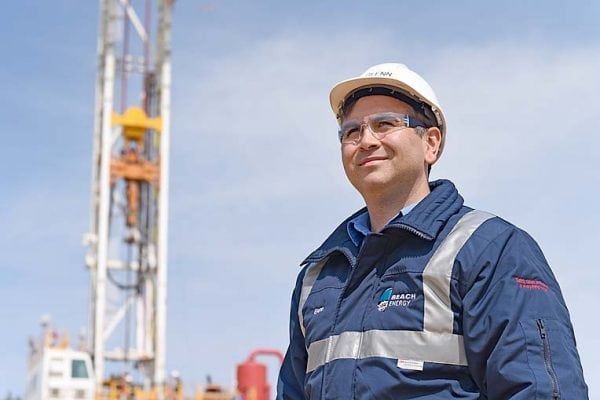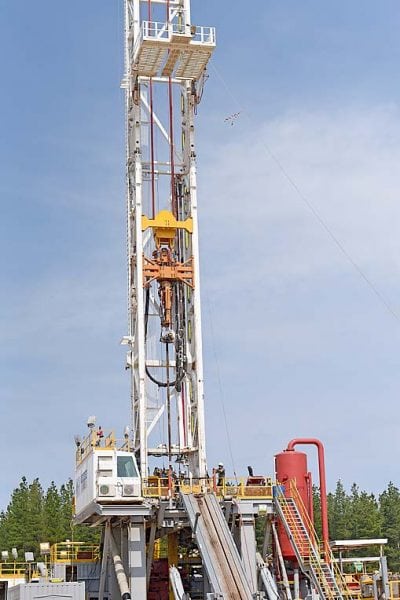

DRILLING is underway at Beach Energy’s Haselgrove-3 conventional well south of Penola in an attempt to tap into commercial quantities of gas for South Australia.
The exploration company – which will drill down 4km through two aquifer systems – yesterday declared the operation posed no danger to the environment or water tables.
Despite strong opposition from anti-gas activists across the region, Beach said the project had the potential to deliver significant quantities of gas into the domestic market to assist industries and combat rising household energy costs.
The Border Watch was given an exclusive tour of the heavily secured site and its towering drill rig on the eve of it ramping up of its 24-hour per day drilling program.
Speaking at the 48-employee camp site, Beach regional manager Glenn Toogood moved to calm community fears over the operation and reconfirmed it was a conventional well.
“Everything is going to plan and safety is paramount in everything we do,” Mr Toogood said.
“We don’t rush for the sake of a schedule if it is going to put safety in jeopardy – we make sure we do everything right before we get going.”
Mr Toogood revealed the Haselgrove-3 drilling program was estimated to cost up to $15m and the company believed the prospect could potentially host 34 billion cubic feet of gas.
“The South East uses between five and seven terajoules a day,” he said.
“This one particular well, if successful, could produce up in the range of 3400 terajoules of gas.”
He said the well would supplement existing gas streams flowing into the region from Victoria.
“The opportunity to explore for gas back in the South East will hopefully create some opportunities for industry by bringing new supplies of gas into the system,” Mr Toogood said.

“You only have to look at people’s electricity and gas bills and the role gas plays in South Australia and the importance of it.”
He said more supplies could put downward pressure on pricing.
Mr Toogood said gas from the site must be first offered to power generators under the conditions of the $6m State Government grant.
“We could then offer it on the open market,” he said.
He revealed the drilling process would take up to eight weeks and would target nearly 4000m below the surface.
“As we go down through the area, that will give us some indication,” Mr Toogood said.
He said the drill would pass through the Gambier limestone (unconfined aquifer) and the confined aquifers.
Importantly, he said the unconfined aquifer had already been sealed with plans under way to put a surface casing and cement along the confined aquifer.
“These two aquifers will be sealed and cemented – they will be completely isolated to any activity below,” Mr Toogood said.
“That is the important part of any oil or gas operations, whether you are here or in the other parts of the Cooper Basin.”
He revealed the Gambier limestone would have four protective layers to isolate it from the operations.
“It is fantastic to be back exploring for gas in this region in a safe and sustainable manner,” he said.
“Beach has a long history in the South East and we look forward to that continuing.”
If the project was successful, he said Beach could explore other “conventional” prospects in the region.
“There are already 17 existing wells in the Penola area, which are now at the end of their life,” he said.
“That is why we are putting in Haselgrove-3.”
He said this well was one of a sister group of wells in the area, which had been providing gas to Katnook.
Speaking on hydraulic fracturing, Mr Toogood said that was a long used technique across Australia and the world.
“Effectively, it is cracking the rock to find micro cracks, which are about nine times the width of a human hair – they are not big gaping holes that propagate into aquifers or the surface,” Mr Toogood said.
He said this technique was usually used with tight rock formations or shale.
“We are not targeting any shale here, just sandstone,” Mr Toogood said.
He said any success at the Haselgrove-3 well would be reported through the Australian Stock Exchange because of market sensitivity.







